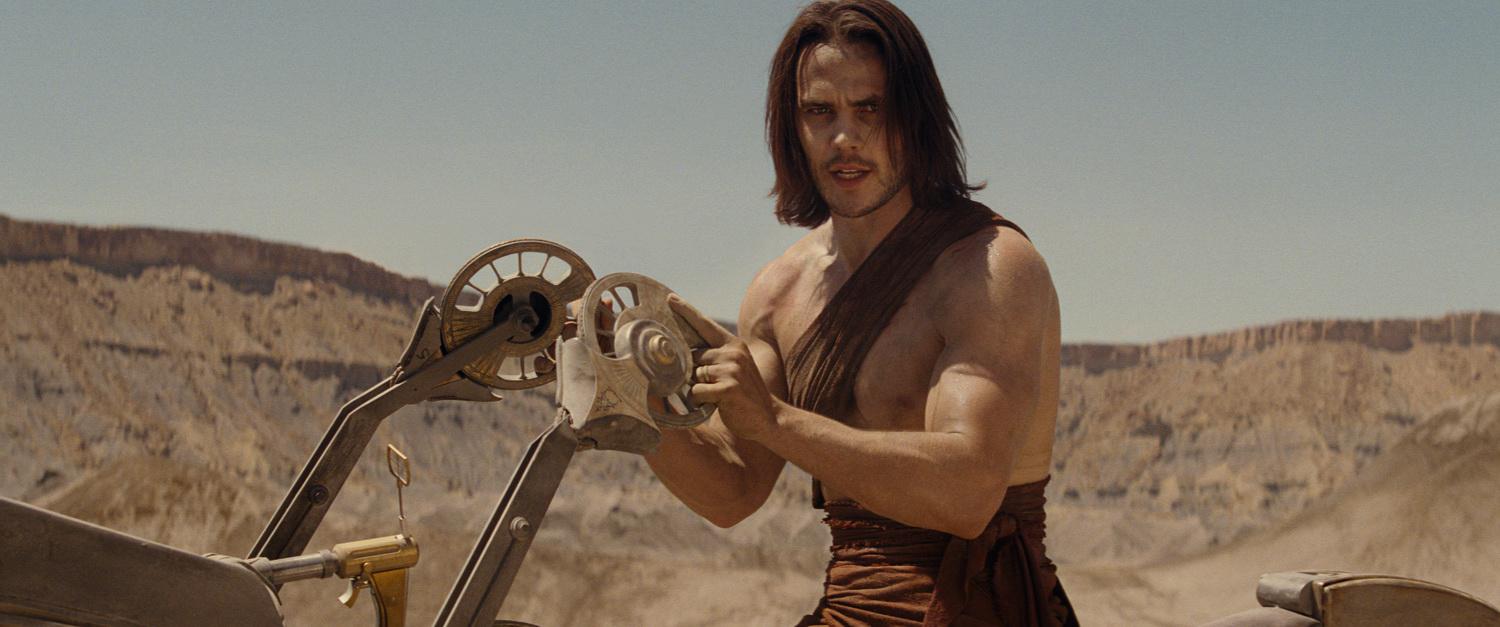Right before the credits roll at the end of Disney’s $250 million science fiction movie John Carter, two initials slowly fade in on the screen: J.C. If it hadn’t occurred to you during the previous hours, a realization may dawn at this moment: The big-budget action flick is a surprisingly Christian movie, with a hero that at times looks a heck of a lot like another J.C., Jesus Christ of Nazareth.

© 2011 Disney and ERB, Inc.
Is John Carter a Christian allegory? No, but it seems to have been inspired by Christian imagery. John Carter is adapted from the Edgar Rice Burroughs novel Princess of Mars, part of the author’s Barsoom series (Barsoom is a fictional version of Mars). Princess of Mars isn’t a Christian allegory either, but Christian themes can be found throughout Burroughs’ work, and director Andrew Stanton—a Christian himself—has chosen to emphasize many of those elements.
Start with the basic storyline. The titular hero is a man from another world who appears in the desert (in this case, he teleports in) and will eventually unite its dwellers to save it. The main villain is not a warrior but another slippery man from another planet, who literally takes many forms (he can transform himself into any other being) and whispers in men’s ears to turns the planet’s dwellers against themselves. Eventually (major spoiler alert!) John Carter will enter a tomb, seemingly dead, and it’s only after he rises again, within the next few days, that he can finish his work.
Of course, all the plot elements above can be found in other stories, some of which are not inspired by the Bible at all. (The Matrix, for example, was interpreted as a retelling of everything from the New Testament to the story of the Buddha to Plato’s Allegory of the Cave.) Much of John Carter’s story has no resemblance to the story of Christ: His primary motivation is a selfish one, for instance—specifically, an attraction to the warrior princess who wears a metal bikini—and his main skill is his ability to jump really high. (He also has a sidekick: a super-fast Martian dog.)
But this wouldn’t be the first time director Andrew Stanton has found inspiration in the Bible. Stanton explained his message in WALL•E to the Christian magazine WORLD: “The greatest commandment Christ gives us is to love, but that’s not always our priority. So I came up with this premise that could demonstrate what I was trying to say—that irrational love defeats the world’s programming.” In another interview, with evangelical magazine Christianity Today, Stanton commented on the parallels between that film and the stories of Adam and Eve (one robot is named EVE) and Noah’s Ark:
There seem to be some biblical themes in this film. WALL•E is sort of like Adam, the only “guy” on earth, lonely, longing for a companion & help?
Andrew Stanton: Yes, and that’s certainly why I picked EVE as an appropriate title for the female robot. But “Adam” just didn’t have the underdog ring to it as the main character. WALL•E was a little bit more sad sack—and I could find an acronym that could work for that. But definitely it had that first man, first female theme. But I wasn’t trying to replace man in the bigger story. I just loved the poetic-ness that these two machines held more care for living and loving than humanity had anymore.
There’s also a bit of Noah’s Ark story here, with the humans on the space station, waiting for a chance to repopulate the earth—but having to wait till EVE comes back with plant life to indicate it’s okay?
Stanton: I wasn’t using the Noah’s Ark story as a guide, but through circumstances, I loved the parallels of EVE almost being like this dove, of going down for proof that it’s time to come back. It just worked in that allegory, so I ran with it.
With John Carter, Stanton didn’t have as much control of the story—he helped adapt the screenplay; for WALL•E, he also conceived the story. But he did control the look of the film and the performances of its actors—not to mention that closing title screen. And once you see the Jesus Christ in his John Carter, it’s hard to unsee it.